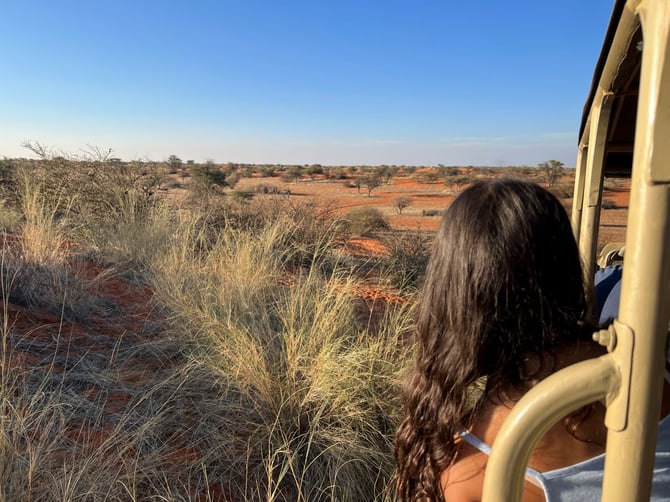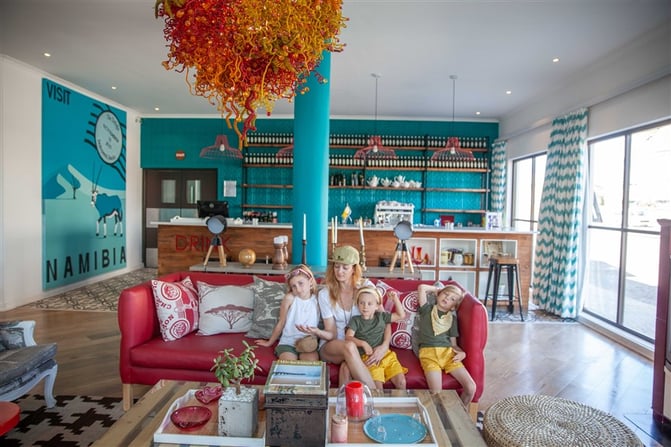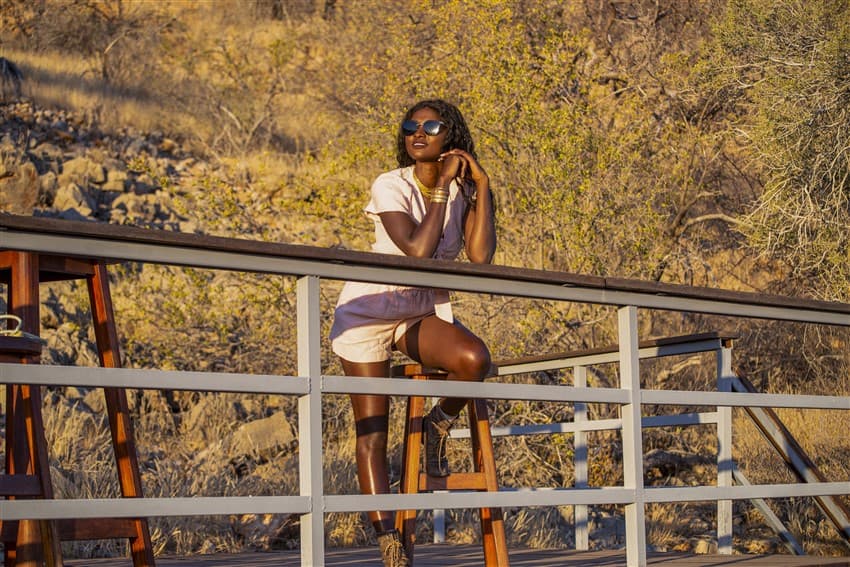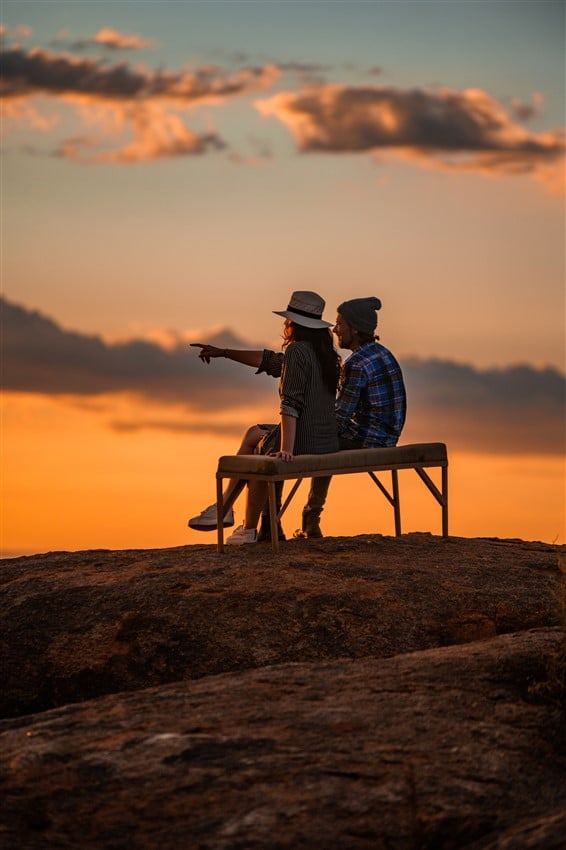Namibia is, amongst other things, considered a wildlife-lover's paradise. Most tours include a safari to introduce visitors to our beautiful conservation success stories and residing wildlife in awe-inspiring landscapes.
I get plenty of questions about the compatibility of young children and a Namibian safari. Follow the simple rules and you’re in for the trip of a lifetime with your small tribe.

Necessary documents
First things first. In an attempt to fight against human trafficking, children younger than 18 years who are travelling to Namibia must travel with unabridged birth certificates. It applies to all SADC countries. Unabridged birth certificates must always be provided, also when only in transit in Johannesburg.
How to safari in Namibia with fun-sized humans
Simply stick to the rules! Since you’re not allowed to get out of your car in a national park such as Etosha (you’ll see the signs), it is essential to plan bathroom stops. A map obtainable at the entrance indicates fenced picnic areas with toilets inside the park. The map can also be a fun way to keep older children occupied. Let them help to plan out where to go next and calculate distances between destinations.
National parks are the wildlife’s home – it's not a zoo! It’s a vast landscape where animals walk around freely in their natural habitat. Never stick heads or limbs that you still plan on using in the future out of the vehicle. This might sound like common sense but crazy things happen because people don’t adhere to rules.

Guided game drive vehicles are usually open. Keep in mind that silence is key during safaris, especially with other people on board. This is also good to remember for waterhole etiquette – keep quiet.
Age restrictions
It is not uncommon for safari trips and game drives to have age restrictions. Always make sure to ask. However, there are no restrictions when it comes to a self-drive safari. Etosha is the perfect self-drive safari destination, amongst many others. (The Cardboard Box Travel Shop is your go-to trip planner partner to help with the details of your family vacation.)
Allow your children to use some of that pent-up energy from sitting in the car all day. Make a game of running up the old watch tower at Okaukuejo. Break up the day by going on game drives in the morning and the late afternoons. These are also the perfect moments of the day that lend themselves to photography. Make use of the swimming pool in the big camps or at your accommodation outside of the park to keep busy in between safaris.
Recommended accommodation: At Etosha Safari Camp the entire family will have a hoot. Cool down in the swimming pool and dance around the campfire to live music by the Etosha Safari Boys. If you’re looking for even more adventure, opt for Etosha Safari Camping2Go. You can still partake in the above-mentioned lodge facilities and fun.
.jpg?width=670&height=436&name=Etosha%20Safari%20Lodge%20(6).jpg)
Recommended duration
Of course, the duration of your trip will depend on the age of your children. Let’s face it, after spending a week in the car driving after wildlife, even adults might get bored. But that’s why Namibia is the perfect safari destination - there are many other things to see and do other than game viewing. Know your tiny human’s limits and work around it.
Waterholes or hides inside parks or at lodges are usually a good change of scenery from driving around in the car.
If one of your stops includes Swakopmund, book a day tour that includes less driving to break it up a bit. A Living Desert Tour is highly recommended – it’s educational and fun. An experienced guide takes you into the desert and shows you the marvellous creatures that call the desert home.
Recommended accommodation: The Delight Swakopmund - breakfast is a highlight at this modern coastal hotel. Children can have fun decorating their waffles, while the adults can enjoy the sparkling wine and oysters.
What to pack for the day
- Snacks and water. Biltong is a great protein snack to keep hunger at bay. It is recommended to put snacks in Tupperware containers if possible, to be as silent as possible, especially on an open vehicle or when relaxing at the waterhole.
- Books and binoculars. Relevant guide books and binoculars might be a good way to keep buzzing minds stimulated and engaged.
- Toys or a back-up something-something in case they get bored is advised.
- Hats, sunglasses, sunscreen and warmer layers for the mornings and evenings when there’s a chance of temperatures dropping.
Aside from the usual goodies you’d take along on your day trips, there isn’t really anything special. If there is something you’d definitely recommend, let us know in the comments below.
Have you taken your children on a Namibian safari? What tips would you give prospective safari-lovers who envision travelling to Namibia with their young ones?
Author – Annelien Murray is an avid wordsmith who turns her pen to all things travel, culture and lifestyle. She was born in a small town called Otjiwarongo and grew up on a farm nearby. Creativity, nature, animals and travelling make her happy.







SUBMIT YOUR COMMENT